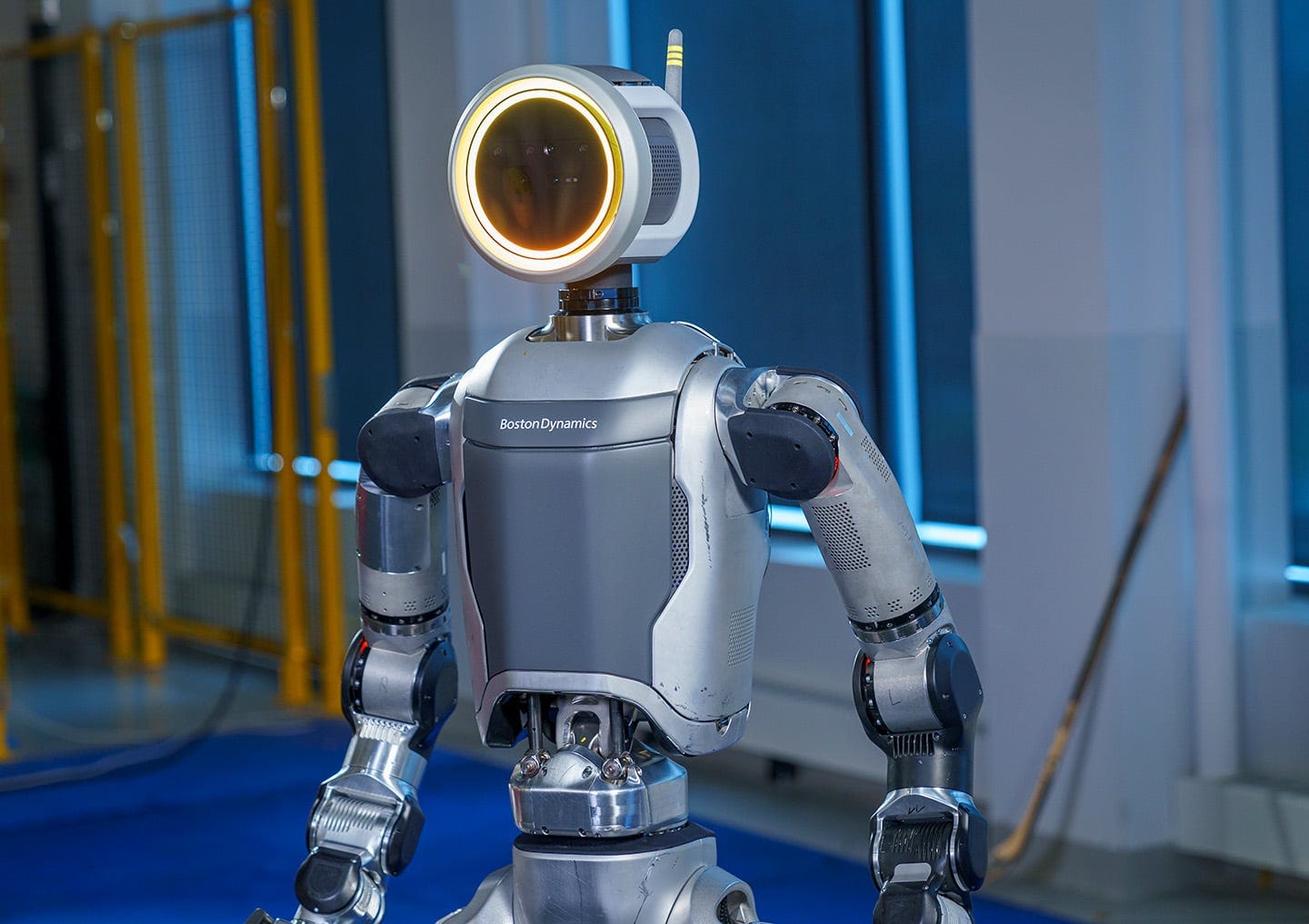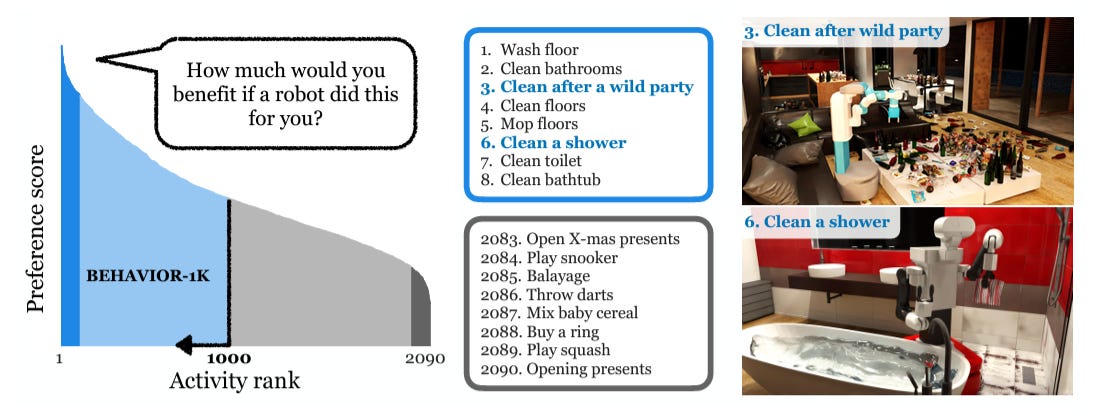
Boston Dynamics recently introduced an all-electric version of its Atlas humanoid robot, incorporating more fluid movements and compact design relative to its hydraulic predecessor. AI, such as reinforcement learning and computer vision, is integrated into Atlas’s operation. Atlas is therefore an example of an embodied AI agent - in other words, an AI system integrated with a physical “thing” that can directly interact with the environment, and learn from the following reaction.
While Atlas was designed for industrial use cases, performing tasks that would be challenging or unsafe for humans (e.g., heavy lifting and inspections in hazardous environments), we can see the potential for embodied AI agents to solve a wide range of problems for people across sectors (e.g., retail, healthcare, home assistance). What problems are embodied AI agents best suited to solve for people?
In this episode, we describe a survey that sought to address this question, and offer a new framework for identifying what tasks we should delegate to embodied AI robots.
Don’t build a robot to open presents
As we work towards embodied AI that closes the loop between perception and action (think of the difference between a robot detecting an egg versus not crushing that egg when it picks it up), there will be an increasing number of tasks we could delegate to these new machines. How do we decide what problems to solve for people with this new technology? Enter design research.
In the 2022 “Behavior-1K” survey, researchers from Stanford, University of Texas at Austin and Salesforce Research sought to learn what everyday activities people would like help with. They surveyed 1,461 participants via Mechanical Turk, asking them to rank a wide range of daily activities based on participants’ desire to delegate these activities to robots. The specific question they asked was, “On a scale of 1 to 10, rate how much you want a robot to do this activity for you.”

The survey revealed systematicity in what activities people wanted robots to do, namely laborious things, and not pleasurable activities. Cleaning tasks made the top three: washing floors (#1), cleaning the bathroom (#2), and cleaning after a wild party (#3). The lowest ranked were: “buy a ring (#2088), “play squash” (#2089), and the lowest ranked of all: “opening presents” (#2090).
While it might be a technological feat to build a present-opener robot, you’re going to have a hard time finding product-market fit. You might argue, “it’s obvious that robots shouldn’t do things people enjoy doing, of course you’d design it to wash floors”. However, the question of what tasks to delegate to robots may not always be this clear-cut.
For example, imagine you’re designing an embodied AI robot to assist older adults in their daily activities. What household tasks should it assist with? Meal preparation? Bringing you your daily medication at a specified time? Should it also be able to hold a conversation and offer companionship? If so, what types of topics should it be able to cover? To answer these questions, you need to first learn from older adults and their caregivers, understanding goals, context, current routines and attitudes around different activities. We can then use our understanding of human needs to identify what tasks our embodied AI agent (aka robot) should perform.
Understanding human vs machine superpowers
Once we understand what tasks humans would value outsourcing to embodied AI agents like robots, we must also examine what tasks people versus machines are better suited for. We can think of this as the process of finding the best fit between problems people want solved and technical capabilities. For the latter, we can turn to the Fitts List, a tool we also discussed in episode 22. The list describes what humans are better at, versus what machines are better at - human and machines’ superpowers, respectively. The list was invented by Paul Fitts, a psychologist who conducted pioneering research on human factors engineering.
The image below shows tasks Fitts deemed were the respective strengths of people and machines. For example, humans are better at reacting to low-probability events (e.g., accidents), while machines are better suited for tasks what require sensitivity to stimuli beyond the human perceptual system’s capabilities (e.g., infrared).
You can create your own Fitts List based on your product area, to identify tasks that AI is best suited to solve. We can apply this to Atlas: The robot was built for industrial use. Tasks that machines, rather than humans, are well-suited for in this context include heavy lifting and industrial inspections in hazardous environments. These are exactly the tasks that Atlas is solving for.
We can map our understanding of people’s needs and people versus machine superpowers onto two axes, to identify what tasks to delegate to embodied AI agents. To populate the “people’s needs” axis: refer back to your design research to identify people’s needs, and distill what tasks people want to do (e.g., unwrap presents), versus what they don’t want or cannot do (e.g., wash floors). To populate the “superpowers” axis: refer back to your Fitts list, and identify tasks that humans are best suited to perform (e.g., reacting to anomalies) versus what machines are best suited to perform (e.g., “seeing” outside of human perceptual thresholds). I’m calling this mapping tool the Embodied AI Task Delegation Framework. The quadrant where ‘tasks people don't want to do’ and machine superpowers intersect is the sweet spot for tasks you should consider delegating to embodied AI agents. Returning to Atlas’s capabilities: “Heavy lifting” and “inspecting hazardous areas” fall into this quadrant, and serve as a good example of effectively delegating tasks to a robot.
Takeaways
Identify what tasks people want to perform, versus tasks people dislike or cannot perform: The Behavior-1K survey demonstrated that people prefer robots to perform laborious tasks rather than pleasurable ones. In order to find product-market fit for embodied AI agents, we must ensure they perform tasks people dislike or cannot perform, rather than tasks they want to perform. Learning about our target audience’s goals, context, behaviors and attitudes help us make this distinction.
Make a Fitts List: For your product area, identify what tasks people versus machines are best suited to solve. You can think of these as the superpowers of people versus machines.
Use the Embodied AI Task Delegation Framework to identify what tasks to delegate to robots: Map relevant tasks onto axes of task desirability and superpowers. Tasks in the quadrant where ‘tasks people don't’ want to do’ and machine superpowers intersect are good candidates for delegation to embodied AI agents.
Human-Computer Interaction News
The untapped potential of system thinking in modern design: The article by Bushra Mahmood, Sr Design Manager at Adobe, discusses the importance of system thinking in modern design, emphasizing that products must be developed with an awareness of their entire life cycle for sustained relevance and adaptability. Bushra shares the four components of integrating system thinking into a workflow: a central platform, a set of frameworks and patterns, UI libraries for designers and engineers, and system processes and checks.
Introducing Meta Llama 3: Meta Llama 3, the company’s next generation, open source large language model, was announced on April 18. User feedback is generally positive, with noted improvements in logic, understanding and factual accuracy, making the AI assistant more versatile and capable than before. Llama 3 also outperformed competitors on certain benchmarking tests like the Multi-task Language Understanding benchmark, which is typically defined as as a general knowledge measurement. Try Llama 3 here.
AI “deathbots” are helping people in China grieve: In China, AI "deathbots" are increasingly used to create avatars of deceased people, offering comfort to those grieving and even hiding deaths from vulnerable family members. These chatbots, which mimic the deceased through cloned voice and appearance, are especially popular around the Qingming tomb-sweeping festival, a time for honoring the dead. While these AI avatars provide a sense of connection and solace, they also raise significant ethical concerns about privacy, the potential for emotional harm, and the impact on the grieving process.
Designing for embodied AI? Sendfull can help identify use cases and evaluate solutions. Reach out at hello@sendfull.com
That’s a wrap 🌯 . More human-computer interaction news from Sendfull next week.





